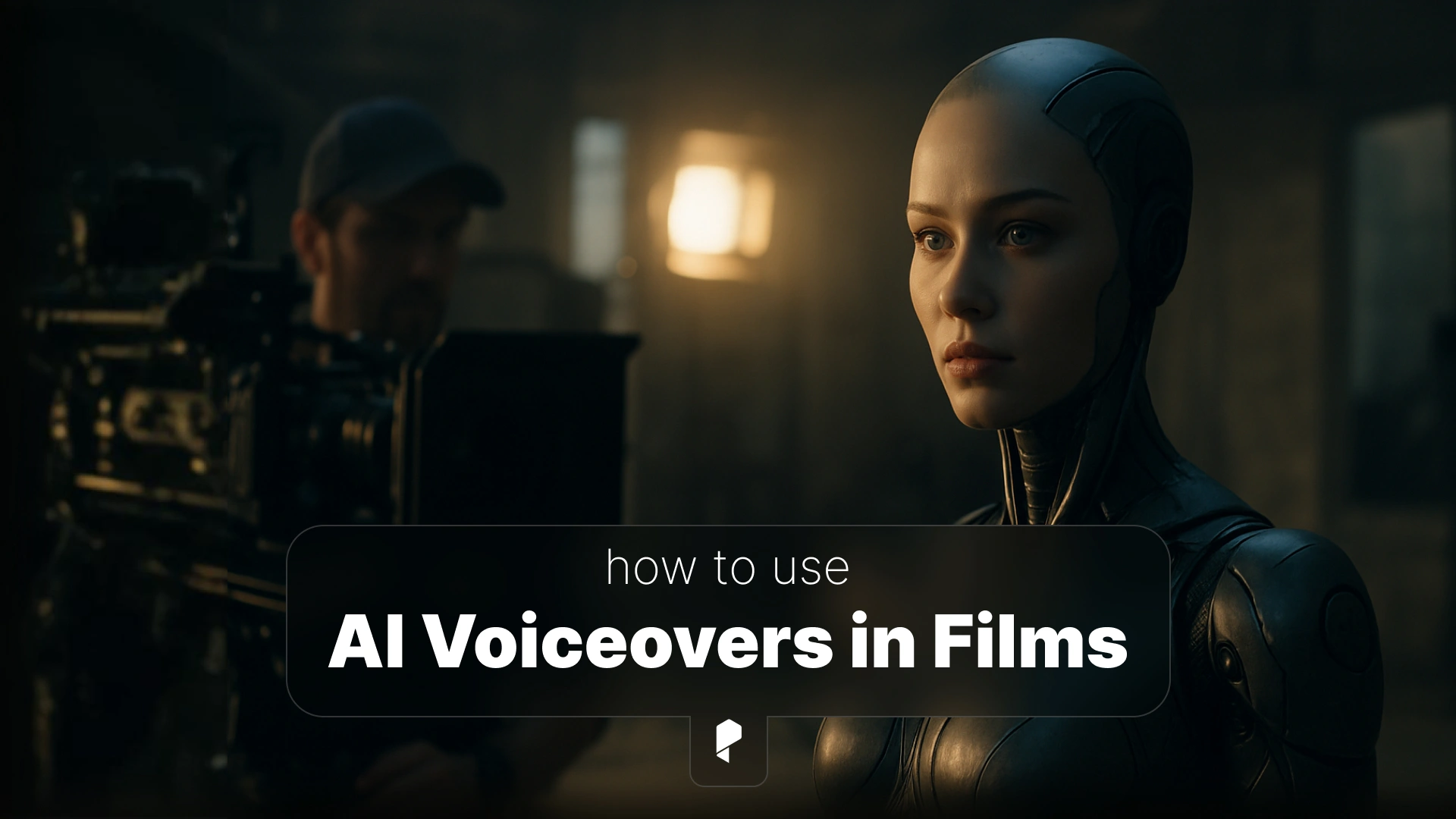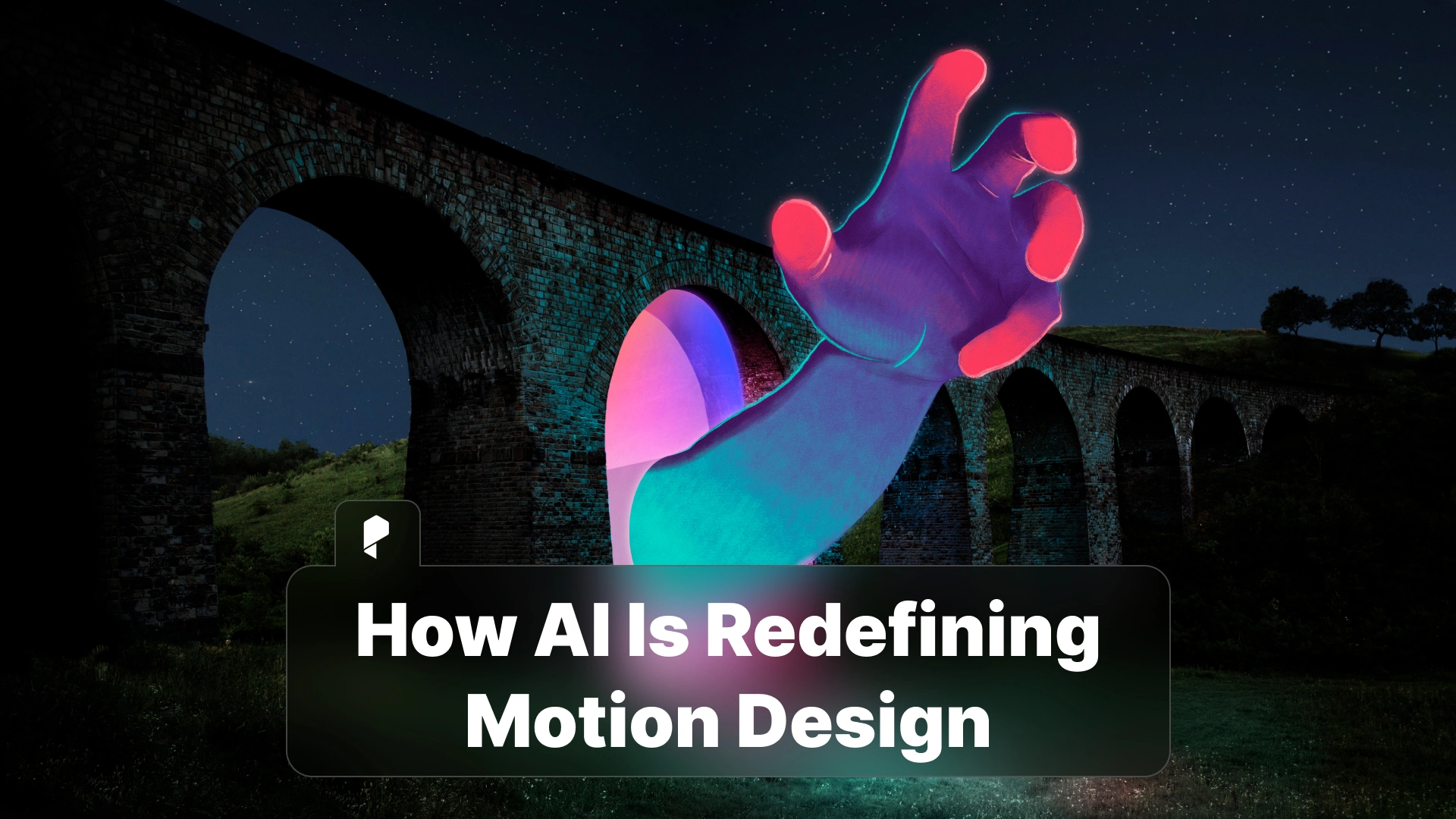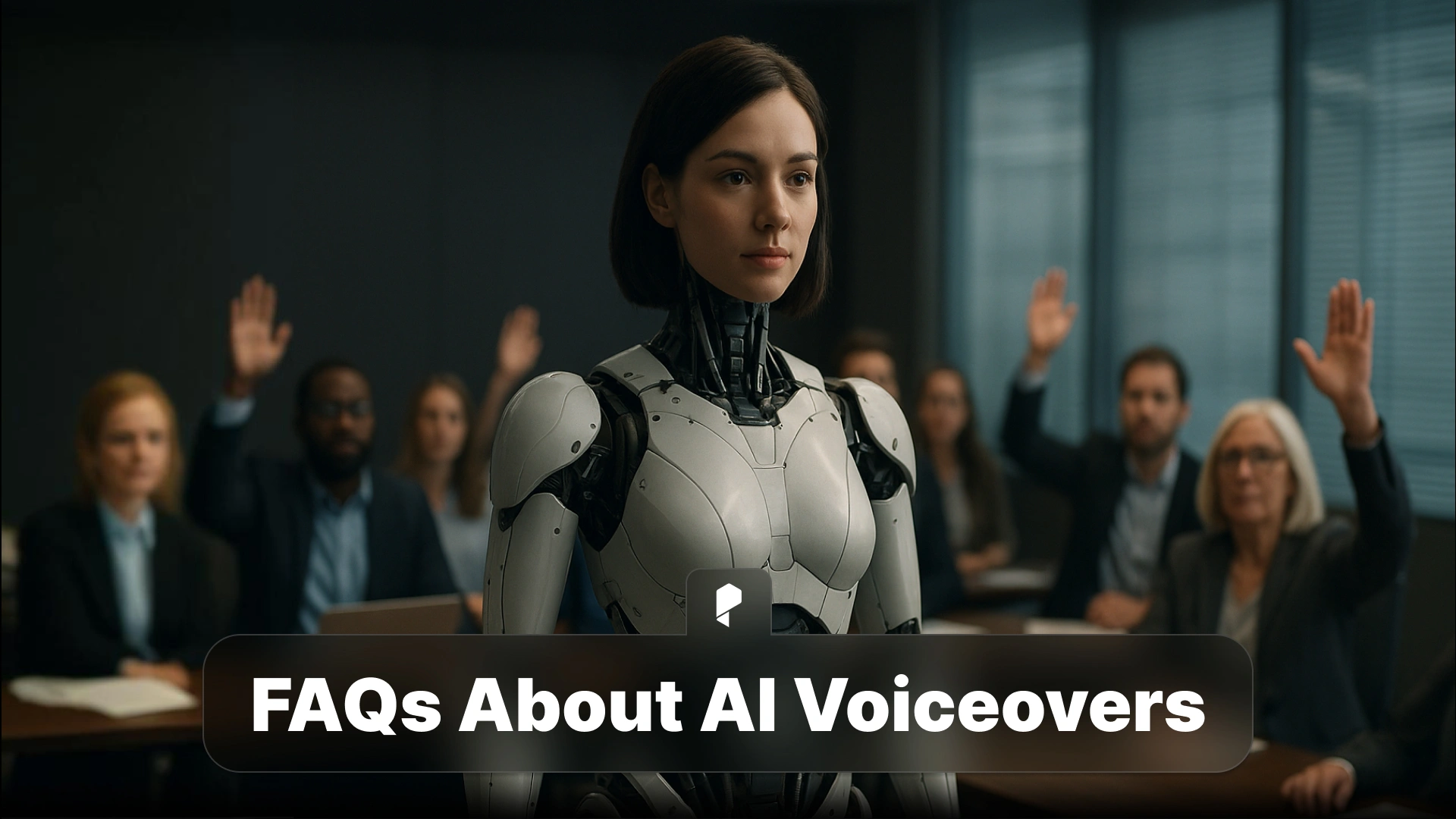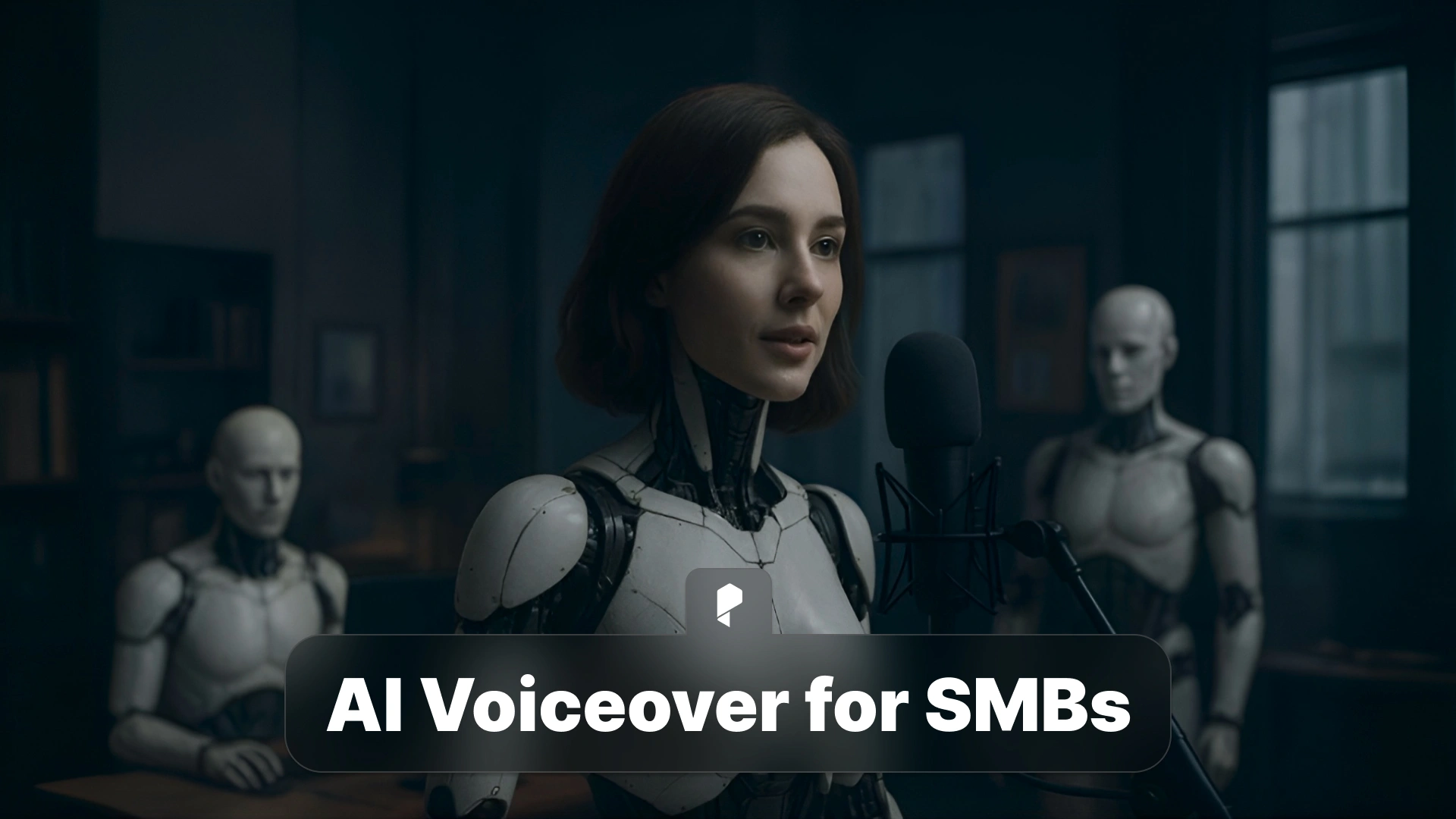AI Voiceovers in Film & Animation: Revolutionizing the Way Stories Are Told

- The Role of Voice in Film and Animation
- How AI Voiceovers Are Changing the Production Pipeline
- AI Voiceovers for Animation Studios
- AI Dubbing and Localization in Film
- Advantages of AI Voiceovers in Film and Animation
- Limitations and Ethical Considerations
- Hybrid Workflows of AI Plus Human Creativity
Traditional voice acting and dubbing can take months of casting, recording, and re-recording. Each language version demands a new team, adding complexity and cost. That’s where AI voiceovers are rewriting the rules in film and animation.
Today, filmmakers use AI-generated voices not just as placeholders but as creative companions, accelerating production, refining storytelling, and making localization effortless. Platforms like Pixflow’s AI Voiceover are leading this change, helping studios bring stories to life faster, cheaper, and more globally than ever before.
The Role of Voice in Film and Animation
Yet, achieving that perfect performance comes with challenges. Casting voice talent, scheduling recording sessions, and re-recording after animation tweaks can stretch timelines and budgets. In many productions, voice direction becomes a balancing act between creative vision and logistical limits.
That’s why more studios are exploring AI voice acting for movies as part of the creative toolkit, not to replace actors, but to extend possibilities. By blending technology with artistry, filmmakers can experiment with dialogue, tone, and pacing earlier in the process, refining the emotional core of their story before the final cut.
How AI Voiceovers Are Changing the Production Pipeline
This allows directors to test emotional pacing and dialogue flow early, catching narrative inconsistencies before animation begins. Similarly, AI narration for animatics and test screenings helps teams gather feedback from producers and test audiences without the expense of studio sessions.
And when edits happen, as they always do, AI voiceovers reduce production time in filmmaking. Need to update a line after animation changes? Instead of booking another actor session, an AI system can regenerate dialogue instantly, matching timing and tone. This new agility keeps projects moving and creativity flowing.
AI Voiceovers for Animation Studios
Another breakthrough lies in AI voice cloning for dubbing and localization. Once a lead actor’s voice is cloned (with consent), AI can reproduce it in multiple languages while maintaining the actor’s emotional essence. This technology not only simplifies global distribution but also preserves brand and character consistency across episodes and franchises.
For indie studios and creators, the benefits are even greater. Affordable, high-quality voice options that make ambitious projects achievable. As seen in other sectors like gaming, explored in AI Voiceovers in Gaming & Interactive Media, AI voices are quickly becoming a cornerstone of modern storytelling pipelines.
AI Dubbing and Localization in Film
AI-driven systems streamline this process by automatically translating scripts, generating emotionally matched performances, and even adjusting lip-sync and facial movement to align with the new dialogue. The result is faster, more accurate localization that preserves the story’s emotional depth.
Major studios are already experimenting with these tools for global releases, especially in animated films where precision in timing and tone is essential. It’s not far-fetched to imagine a future where AI-powered localization becomes standard across streaming platforms, expanding access to diverse stories worldwide.
For filmmakers exploring this route, tools like Pixflow AI Voiceover offer an accessible entry point into this evolving field, with multilingual support and adaptable tones that fit every genre.
If you’re curious how this transformation ties into broader industry shifts, check out The Future of AI Voiceovers: Trends & Predictions for what’s coming next.
Advantages of AI Voiceovers in Film and Animation
Speed is the most immediate gain. Need to adjust a line after editing or add new dialogue to a scene? Instead of booking another recording session, AI lets you make instant voice edits that sync perfectly with visuals. This can replace days of re-recording with a few clicks.
Then there’s cost efficiency. For independent filmmakers and small studios, hiring voice actors for multiple characters or languages can be prohibitive. AI voice acting for movies provides high-quality results at a fraction of the price, without compromising creative control.
Finally, creative flexibility opens entirely new storytelling possibilities. Directors can experiment with tone, pacing, or even accents in real-time. And with AI voice cloning for dubbing and localization, it’s easier than ever to reach global audiences while keeping every voice consistent and expressive.
Pixflow’s AI Voiceover tool offers customizable voices across 27 languages, which makes it a powerful way to bring any script to life.
Limitations and Ethical Considerations
There are also ethical concerns surrounding AI voice cloning and deepfake technology. Cloning an actor’s voice without consent or proper compensation can lead to serious legal and moral challenges. Studios must ensure transparency, rights management, and respect for creative ownership.
In professional animation, some creators worry about losing the “soul” behind performances. But the best path forward isn’t replacement, it’s collaboration. Responsible use of AI tools can enhance artistry, reduce workload, and make the industry more inclusive, without erasing the human element that makes storytelling powerful.
For a broader perspective on responsible innovation, you can explore AI Voiceovers: The Complete Guide for industry best practices.
The Future: Hybrid Workflows of AI Plus Human Creativity
As AI continues to evolve, emotionally responsive voice models will enable real-time interaction with characters. Imagine adjusting tone or emotion live during a session, or generating unique performances tailored to different audiences.
We’re also witnessing the rise of fully AI-generated animated short films, where every element, whether it’s visual, dialogue, or sound, is produced with machine learning tools. But even in these scenarios, human direction, taste, and storytelling remain at the core. The future belongs to hybrid workflows, where AI amplifies human imagination rather than replacing it.
If you’re interested in exploring how these tools will evolve, don’t miss Best AI Voiceover Tools in 2025, a deep dive into the leading technologies shaping this space.
Conclusion
By combining AI’s scalability with human artistry, studios can deliver emotionally rich, globally accessible stories faster than ever. And with platforms like Pixflow AI Voiceover, the tools are no longer limited to major studios, they’re available to every creator ready to experiment.
So whether you’re producing an animated short, a feature film, or a multilingual series, now is the time to explore how AI voiceovers can transform your workflow and storytelling potential.
For more insights into how AI is reshaping content creation, check out AI Voiceovers for Businesses: Marketing, Training, and Beyond to see its impact beyond the entertainment industry.
If you buy something through our links, we may earn an affiliate commission or have a sponsored relationship with the brand, at no cost to you. We recommend only products we genuinely like. Thank you so much.





